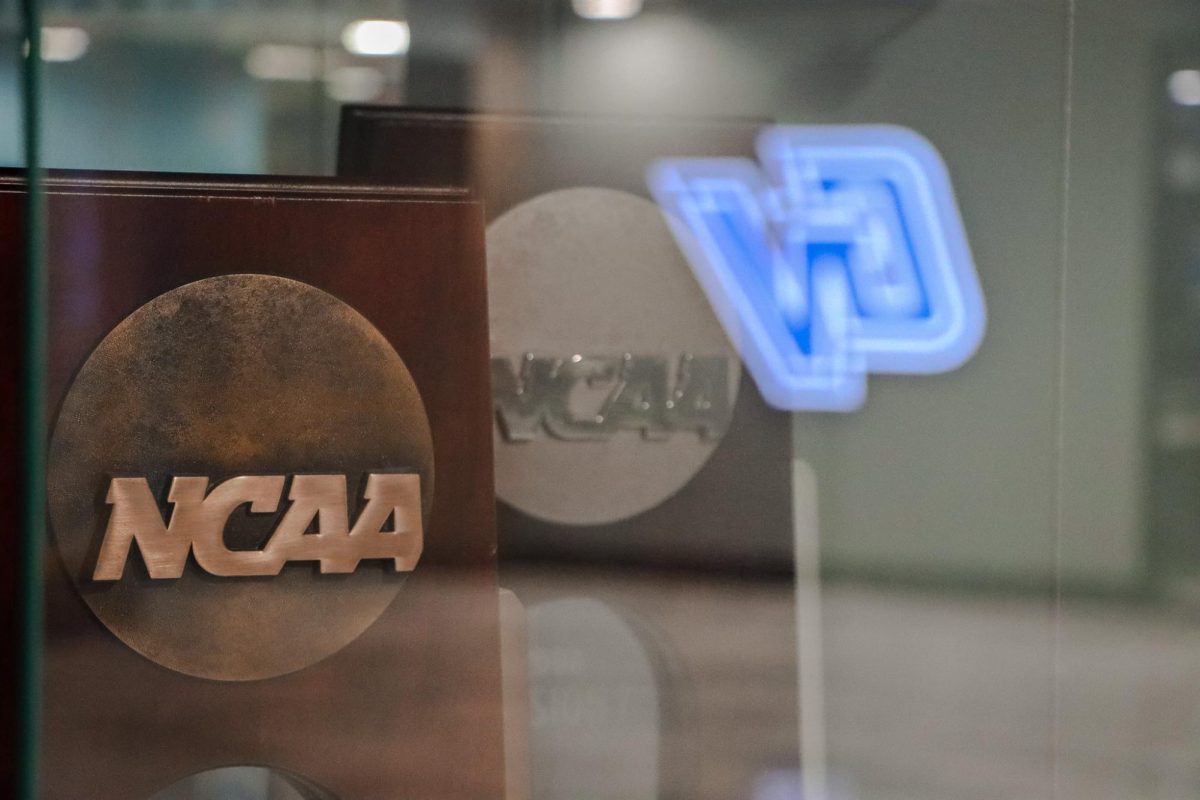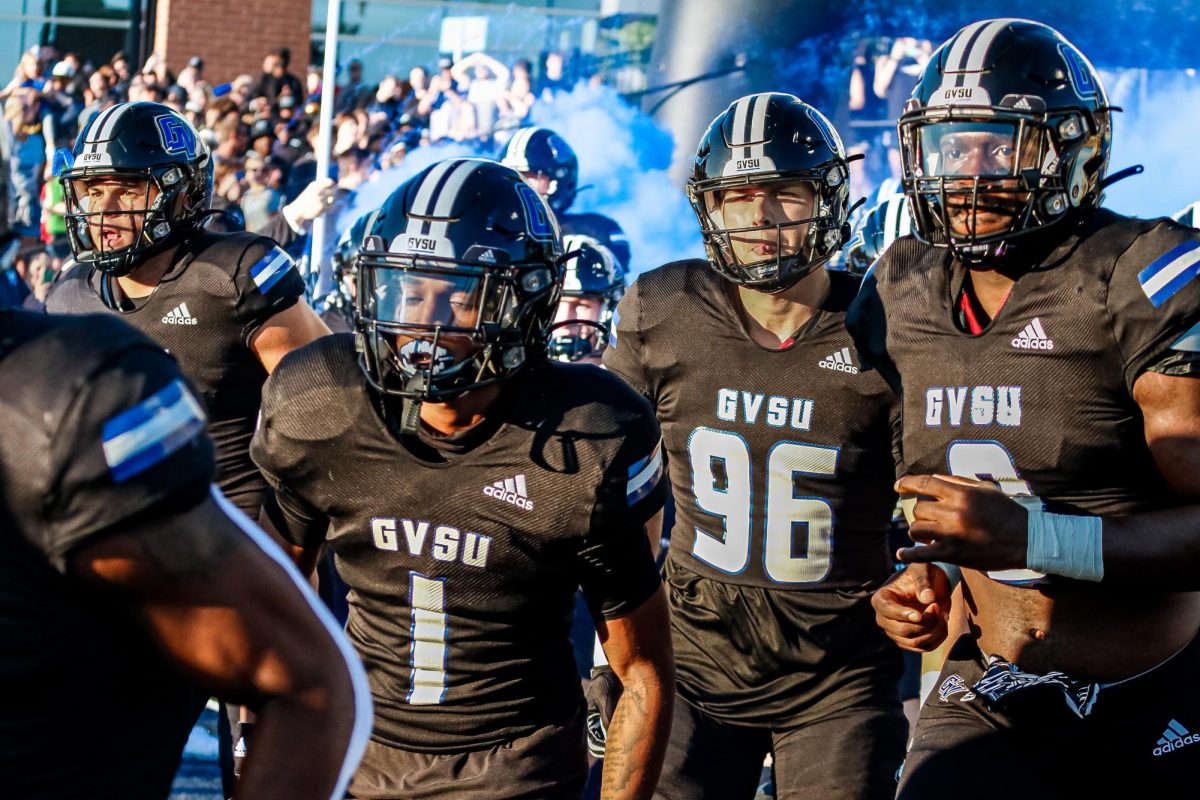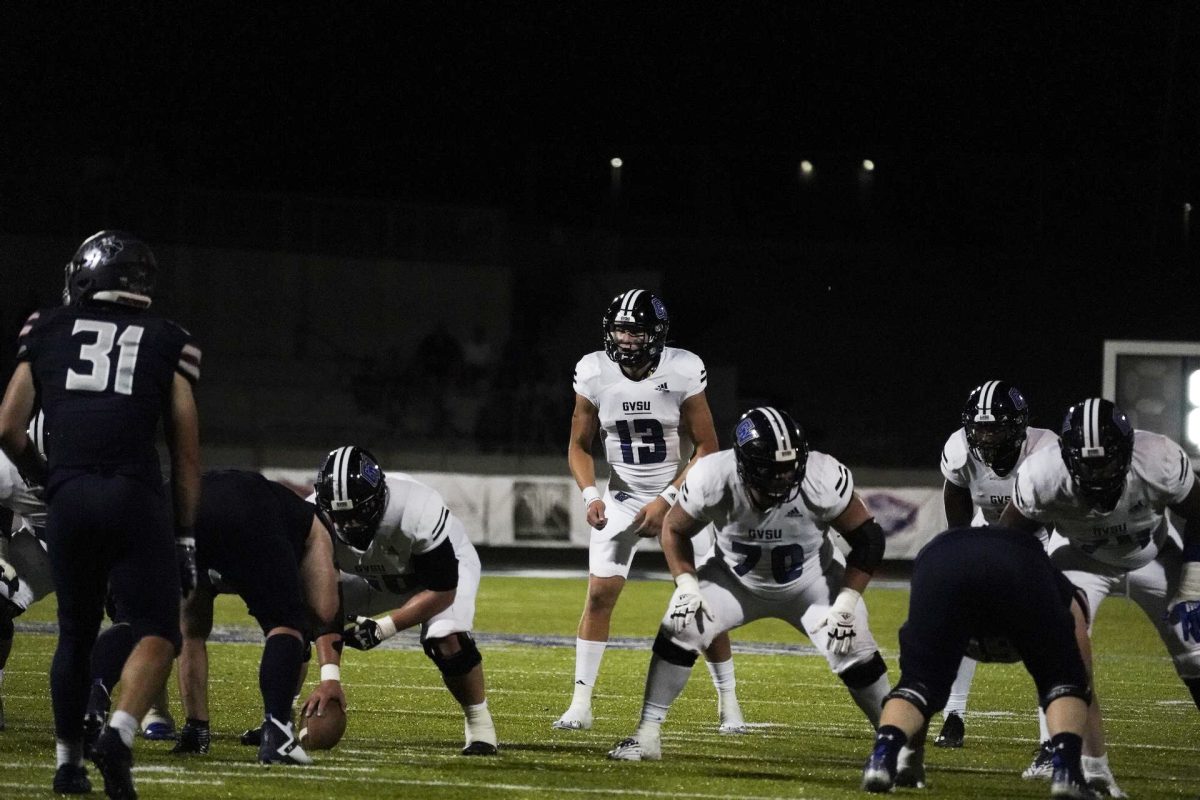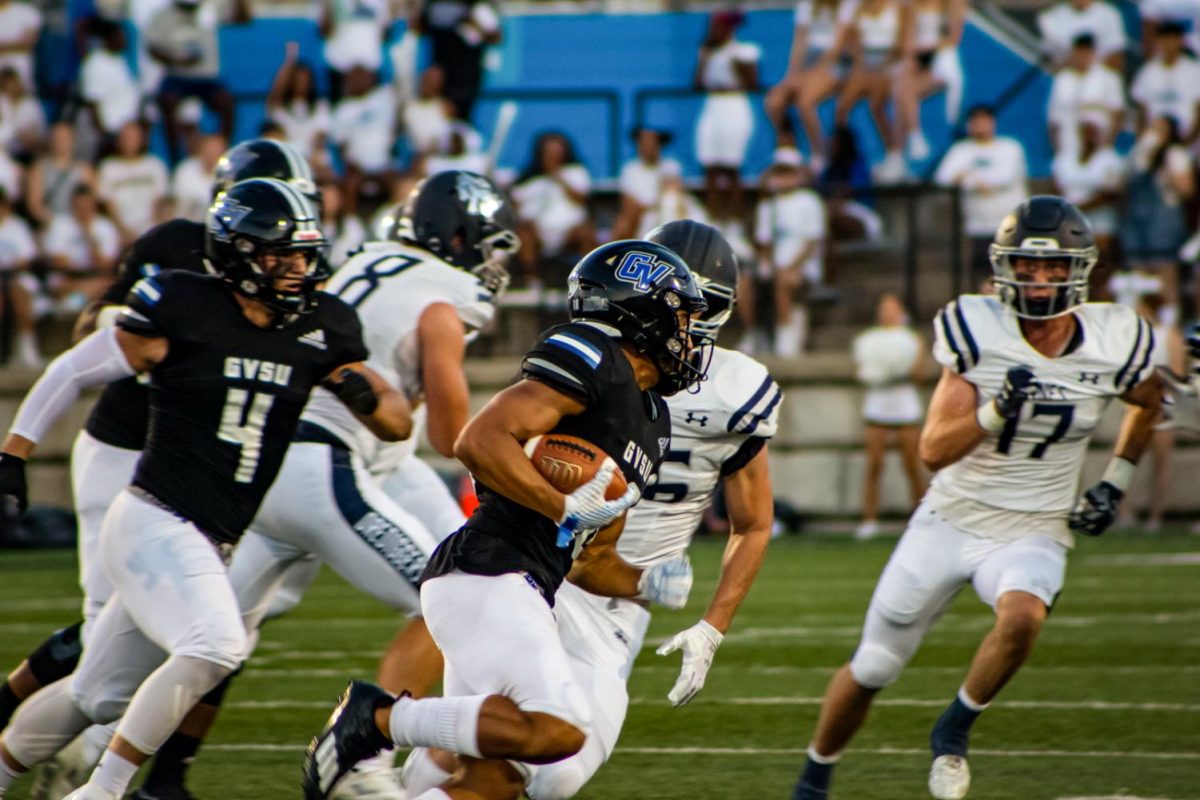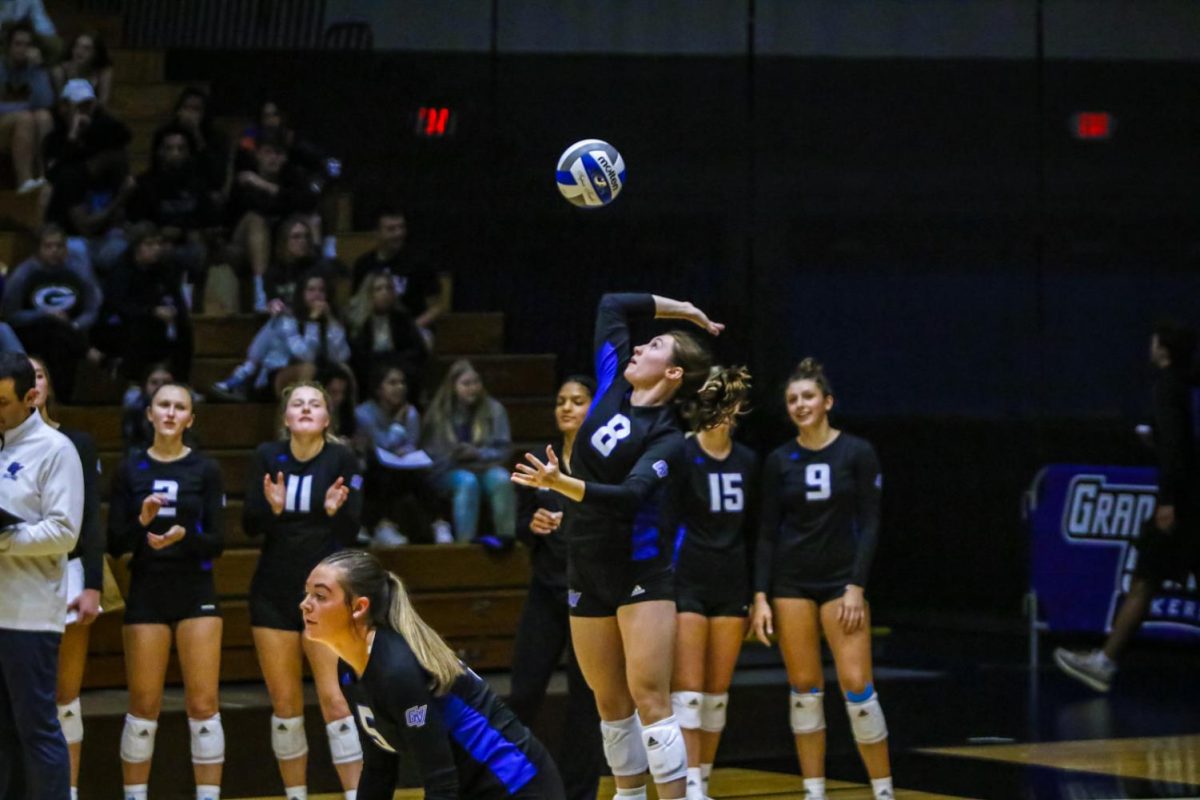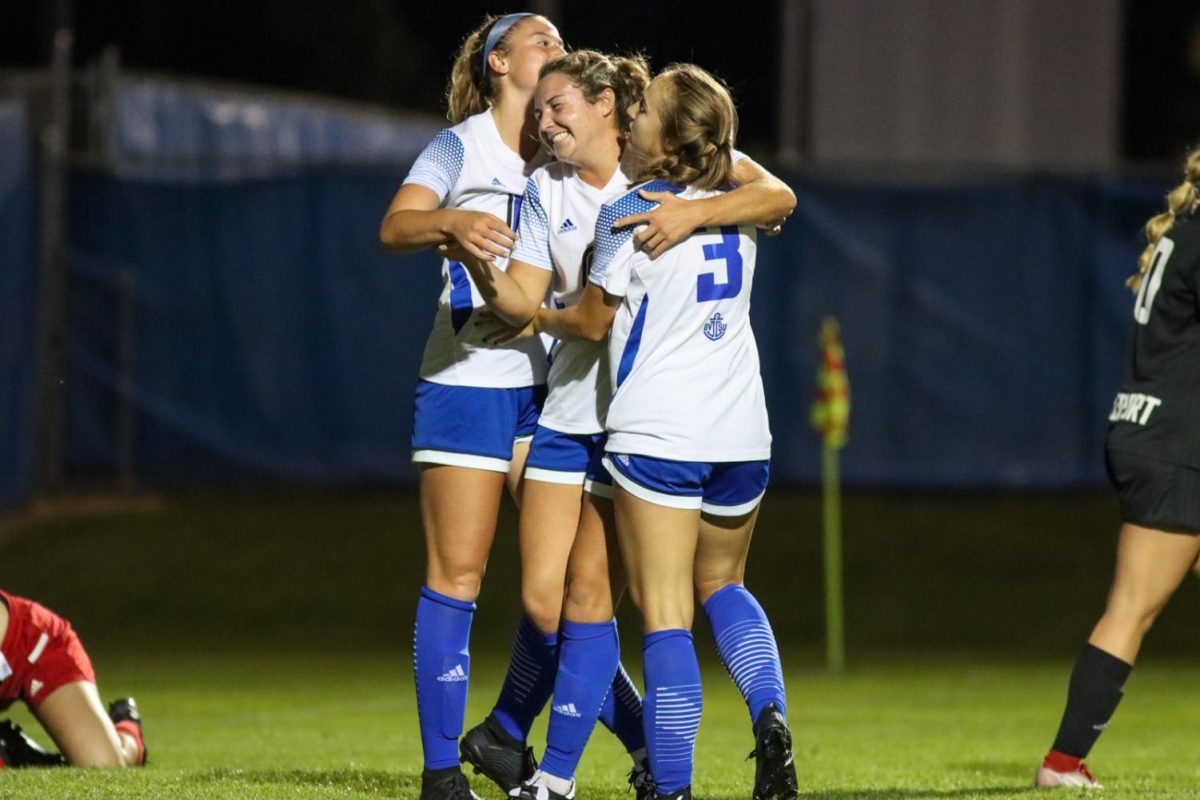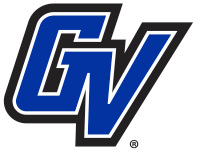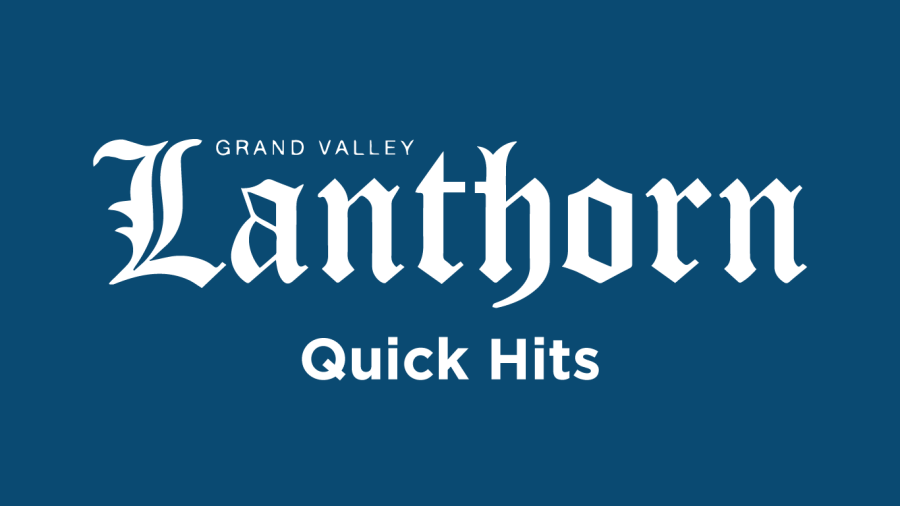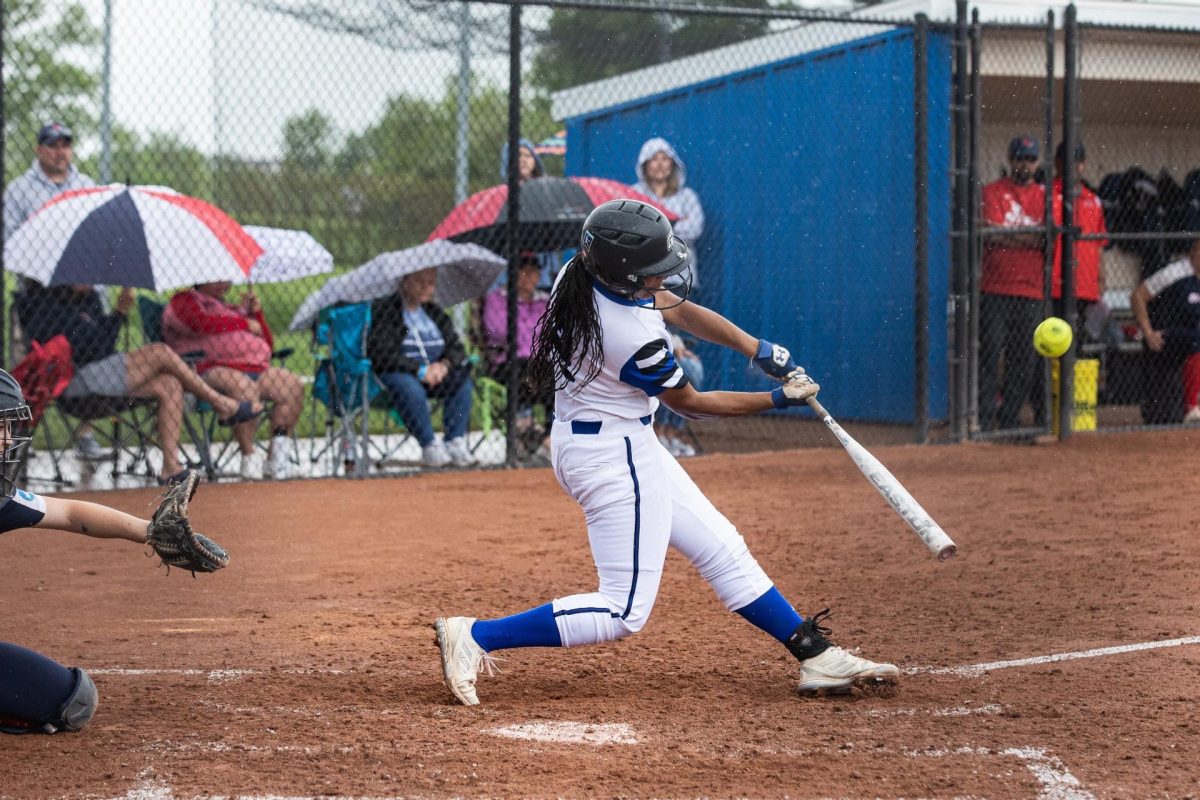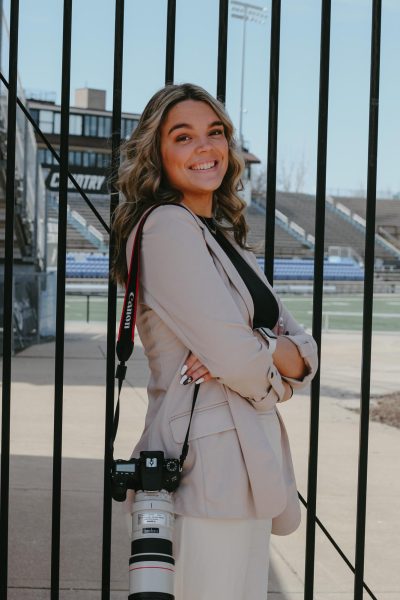Two and a half years ago the groundbreaking Supreme Court ruling, NCAA v. Alston, prompted the National Collegiate Athletic Association (NCAA) to establish policies allowing college athletes to profit off of their name. Ever since the NCAA opened the floodgates of the Name, Image, and Likeness world, there has been open-ended possibilities of NIL are evident to college athletes at all divisions.
The benefits of NIL agreements are apparent for many Division 1 college athletes. For instance, Livvy Dunn, a gymnast at Louisiana State University has accumulated an estimated $3.5 million annually as of 2023 through NIL agreements. However, that’s not the reality for all student-athletes, especially those below Division I who are navigating this new environment in search of ways to stand out.
Grand Valley State University golfer Charlie DeLong has burst into the world of NIL by signing a total of three agreements within 2023 that have netted him an estimated $13,000 so far for his services. Although a pittance compared with Dunne’s haul, DeLong’s earnings account for more than a quarter of all NIL money earned by GVSU athletes.
There’s no question that DeLong’s athletic abilities have helped shape him to be the image that companies are searching for. Some of the many accomplishments DeLong has achieved throughout his years in the sport include being the first GVSU and GLIAC golfer to win the Division II Jack Nicklaus National Player of the Year Award, the PING First-Team All American and All-Region honors, and being selected as the GLIAC Golfer of the Year for the 2022-23 season.
Currently, 640 athletes take part in at least one varsity sport at GVSU, with 376 men and 264 women. Records obtained from GVSU’s Athletic Department through a Freedom of Information Act request show that between August 2021 and August 2023, there were a total of 120 NIL agreements involving GVSU student-athletes. Out of these agreements, there has been close to $51,000 in compensation earned by GVSU student-athletes, DeLong earning more than one-quarter of this revenue.
The loosely made model designed for college athletics is beginning to fall apart. GVSU Head Football Coach Scott Wooster is questioning how long it will be until it bursts. Wooster expresses his concern surrounding the “scary elements” of NIL.
“The trouble is I think that the NCAA stood on that mountain of amateurism for so long that when it broke all hell broke loose,” Wooster said. “The pendulum had swung from this amateurism where you can’t work a camp, you can’t get a free T-shirt all the way to Lamborghinis and million dollar contracts.”
The “pendulum swing” Wooster referenced was the stark contrast of the rules college athletes were expected to follow before the NCAA v. Alston ruling on June 21, 2021. Prior to this decision, the NCAA had established rules that limited the type of compensation that universities could give to student athletes, due to the wide range of benefits the schools benefit from on behalf of the players, to distinguish the line between college athletics and professional sports. Numerous college athletes argued that the NCAA and universities were profiting off their names and likeness in projects associated with college athletics such as in video games, however athletes were not receiving any compensation, in violation of the Sherman Antitrust Act.
This decision was later upheld by the Ninth Circuit. The NCAA followed this verdict by agreeing to allow student-athletes to receive full scholarships for academics and even reviewed its policies revolving around how to compensate players for names and likenesses.
In the three years since this groundbreaking decision, NIL agreements have exploded among college athletes of all three NCAA divisions and all different sports. Universities and states have had to scramble up policies and regulations to support student-athletes in their efforts to profit off of their names. As of July 1, 2021, NCAA rules and Michigan state law permit student-athletes to engage in NIL activities where they can “receive compensation from a business to use the student-athlete’s NIL to promote their service, use their own NIL to promote their own business, and receive compensation to sign autographs or appear at a business or private event.”
GVSU arguably stands as one of the leading institutions in Division II sports having earned a record 15 Directors’ Cup, along with placing in the top two in the past 20 years. The university showed its support for student-athletes receiving compensation for the use of their NILs, and quickly created a policy for athletes.
“I started sending out emails by the end of July that year (2021), sending out Q and A’s on here’s what you can and can’t do,” said Wendy Wilson, GVSU’s Associate Director of Athletics in Compliance. “In that initial year, we didn’t have a system in place, but myself and a member of the external athletics started looking at what system we wanted to put in place.”
According to the GVSU Name, Image and Likeness Policy for Student-Athletes, any athletes involving themselves in an NIL agreement that they have arranged for themselves “must disclose any name, image and likeness activities at least seven calendar days prior to entering into an agreement for the proposed activity.”
A senior on the GVSU Men’s Golf Team and a Dewitt, Michigan native, DeLong has found himself thriving in the world of NIL with a total of three agreements he’s made with local companies. His biggest is pertaining to The Leaderboard, an indoor golf facility that offers a 4k golfing simulation. DeLong signed a one-year $10,000 contract with the golf facility to help promote their brand through social media.
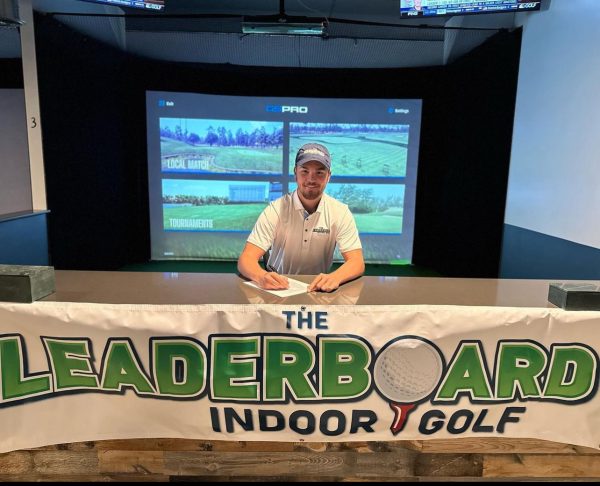
“Luckily, the manager (Chris Beltzer) of The Leaderboard is a Grand Valley golf alum. So he followed along with the program and was interested in partnering with me for a promotion,” DeLong said. “Already having a relationship with him made it an easy thing for us.”
Chris Beltzer, one of the three owners of The Leaderboard, believed this was a unique opportunity for the company to embark on as a way to market themselves and support young athletes like DeLong.
“We thought it would be a really cool, creative way to market ourselves but also support Charlie not only financially but also down the road just to have another handful of people in his corner,” Beltzer said.
As part of his contract, DeLong utilizes his social media platform to help promote The Leaderboard and demonstrate why this facility is beneficial to other golfers, along with attending events hosted by the company and wearing their logo during his summer tournaments.
“We didn’t want to be a nuisance for him so in terms of the amount of stuff he does for us on a monthly basis we don’t have a specific number,” Beltzer said. “A lot of these competitors of ours aren’t doing stuff like this that we’ve seen, so we thought it would be the perfect opportunity to feel out this new space we are entering.”
Throughout his time as a student athlete at GVSU, DeLong has found his experience taking on NILs to be an extremely beneficial attribution to the hectic life that comes with being an athlete at a collegiate level.
“It has definitely helped the funds that I have received,” DeLong said. “It’s been super useful in playing in outside competitions. Traveling to golf tournaments can get expensive so it is nice to have the backing of companies like The Leaderboard.”
Opportunities are not limited to DeLong’s experience in the NIL world. A partnership was formed between the University and INFLCR, the leading content and compliance platform for elite athletic programs, in December of 2021 to assist Laker student-athletes in their NIL opportunities. This is a content-creation platform that has been utilized to help student-athletes “in the monetization and dissemination of photos, video and graphics. INFLCR also educates student-athletes in areas related to personal marketing and branding.”
Unlike Big Ten schools such as the University of Michigan which have a whole office devoted solely to handling student athletes NIL agreements, Wendy Wilson, GVSU’s Associate Director of Athletics Compliance, has been handling all of GVSU disclosures herself.
Wilson stated how every athlete is registered in INFLCR, the leading content and compliance platform for college athletics, once they are added to the roster, and prompted to answer a series of questions to affirm that they are not in violation of the University’s policy.
“There is the straightforward check and disclosure that seems really easy, it seems like it should take thirty seconds. But more often than not there is something that they report in the disclosure that requires a follow up,” Wilson said.
GVSU’s Athletic Department has taken on the responsibility of keeping student athletes educated on NILs as the rules continuously change.
“Being Division II it’s not what you see on TV. That’s the story, we all wear different hats,” Wooster said. “I think we’ve done a remarkable job with the people we have in place of educating our student athletes and finding where we fit into this thing.”
Luke Toliver, a Paw Paw, Michigan native and alum of the GVSU Men’s Basketball team exemplifies the reality of the world of NIL for student athletes. He said the training provided by GVSU about how to sell his image through an NIL benefited him greatly in this circumstance.
“Grand Valley’s NIL training that was offered to its teams I found to be very helpful,” Toliver said. “All partnerships that I have had have been very beneficial to me especially with helping to make school much easier and affordable.”
After spending three seasons as a reserve forward for Western Michigan University, GVSU offered Toliver the opportunity of a more expanded role on a team that he was looking for.
In October of 2022, Toliver signed a $1,000 NIL agreement with Shoot-A-Way, a company that provides basketball players with equipment to help improve their shooting skills. Toliver promoted Shoot-A-Way’s product, The Gun 12K, on the company’s YouTube channel. He said that he credits his career’s success to utilizing the gun.
Toliver took great pride in representing the deal, as he spent much of his training utilizing the company’s product. Through the process, he sought to form a greater connection with the company.
Although the glory stories for some athletes seem promising, there are potential problems for the future of NIL agreements in college sports. Currently, regulations for NIL differ from state to state and every university has a different take on how to handle this new reality.
There are questions swirling around now on whether the NCAA’s approach to the use of NIL agreements is sustainable. NIL agreements are being viewed by many as a patchwork solution to the bigger issue at hand. College athletics has entered a new age that is largely shrouded in the unknown where universities and coaches are questioning whether it can keep going forward like this.
Kellen Voss, an assignment editor at WXYZ Channel 7 in Detroit, and reporter covering the University of Michigan men and women’s basketball for the Maize n Brew, a website dedicated to all things Michigan athletics, expressed his perspective on how the NCAA missed their chance of truly embracing this concept from the beginning.
“I don’t think the NCAA, when the ruling first came down, truly embraced it. I don’t think the NCAA loved that this happened and just said ‘Okay knock yourselves out. Go do what you wanna do, but we’re not going to regulate it at all,” Voss said.
The NCAA turned to Congress for a Hail Mary to help dictate the future of college athletics on Oct. 17, 2023 at the 10th Senate hearing regarding NIL since 2020.
NCAA president Charlie Baker and Big Ten Commissioner Tony Petitti testified before the Senate asking to draft a federal law to allow the NCAA to regulate how athletes make money regarding NIL agreements. The proposed bill would give the NCAA the authority to oversee NIL, make changes to the transfer portal and require some schools to offer health insurance to athletes after graduating.
Many current and former college athletes and athletic directors stood before the Senate and held differing opinions on this issue. Some, such as Notre Dame Athletic Director Jack Swarbrick, sided with the NCAA’s plea for federal legislation.
Yet despite the push from leaders of the NCAA and testimony of those directly impacted by the regulations of NIL agreements for student-athletes, the Senate still finds itself at a standstill on what, if anything, federal regulation for this case would look like.
Republican Senators Lindsay Graham of South Carolina and Thom Tillis of North Carolina raised concerns that employment status given to student-athletes would damage NCAA Division II sports as well as any other athletic programs that do not generate a large revenue. This could potentially negatively impact the recruitment done by professional sports leagues, they said.
Division II is the only division to have codified in the bylaws anything related to NIL after legislation was passed immediately this past January, whereas Division I and III find themselves strictly referencing guidelines alone. This is leaving universities and athletes stuck in the middle between state laws and the NCAA seeking a reestablishment of some level of control, and the two are on a collision course.
“As we start to see numbers grow in NIL activity, how are we supporting the questions we are getting?” Wilson asked. “I don’t think anyone knows where this is going.”






















